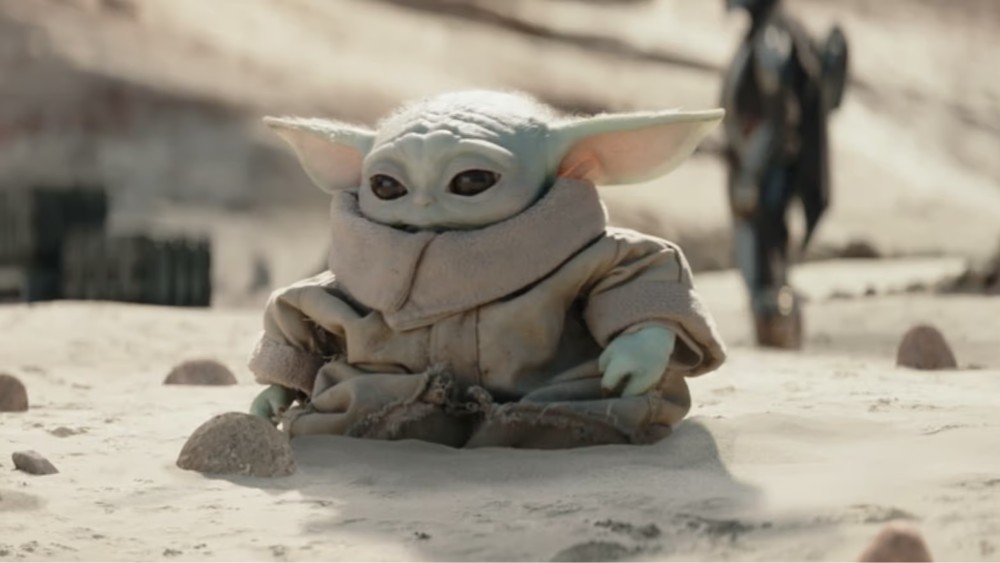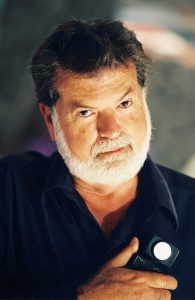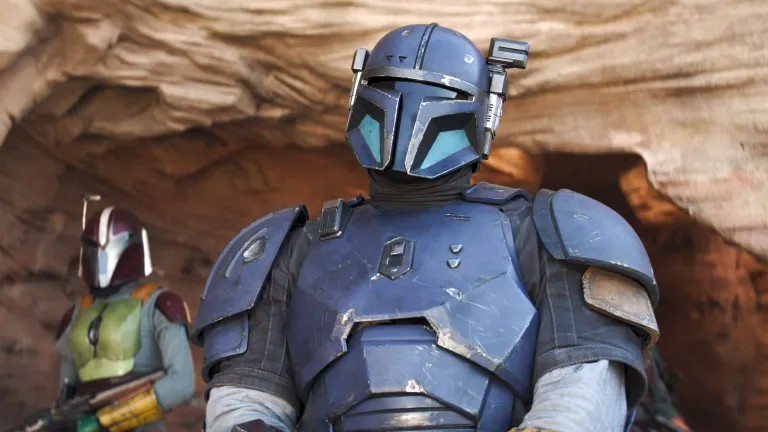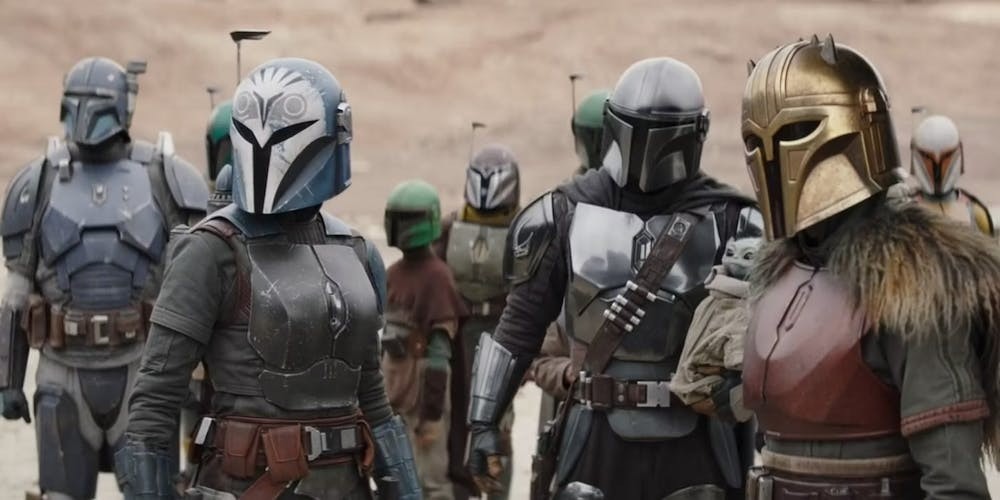
Longtime cinematographer Dean Cundey handled duties behind the camera on The Mandalorian Season 3, Episode 4 (aka Chapter 20), titled “The Foundling.” Audiences finally got to see how Grogu was rescued during Order 66, and the episode featured Ahmed Best’s return to the Star Wars universe. Best portrayed Jar Jar Binks during the prequel trilogy—a character that was not well received when Star Wars: The Phantom Menace premiered in May 1999. Suffice it to say, fans applauded his return during The Mandalorian’s third season.
As for Cundey, he tells Below the Line that receiving a nomination is “very gratifying.” Cundey’s lengthy career has seen him pick up both Oscar and BAFTA nominations for Who Framed Roger Rabbit. He would also earn a BAFTA nomination for his work on Apollo 13. This is the first Emmy nomination for the Jurassic Park cinematographer. Cundey’s career dates back to the early 1970s with highlights that include Hook and the Back to the Future trilogy, no shortage of fan favorites to say the least.

BTL: How does it feel to receive an Emmy nomination for your work on “The Foundling” episode of The Mandalorian?
Cundey: Well, it is very gratifying. Very pleasing. I’m very proud of the fact that I’ve been noticed for something that I was having a great deal of fun doing.
BTL: I had a lot of fun watching that episode.
Cundey: Excellent.
BTL: How did you first get attached to working on The Mandalorian?
Cundey: Well, it was one of those fortuitous moments when I got a phone call that said was I interested in talking to the people from The Mandalorian – Jon Favreau, Dave Filoni, and also Robert Rodriguez. I was very pleased and excited to have been chosen for consideration, and even more excited when I heard that they had said I can come aboard the great adventure.
BTL: When it comes to working on a series that already has a look, how do you decide on camera and lens?
Cundey: Well, the guidance was very good. The look had been established quite a while ago, and then Dave Klein has been continuing it. When I joined, I had this obligation, of course, to continue the look, but I think that what’s fun is adding my own little spin on things, shots, lighting style, and so forth that it has to fit into the existing book. I found it very challenging, but very gratifying.
BTL: The Volume is one of the biggest innovations in recent years. How does this impact your lighting decisions compared to when you’re working on location, a regular soundstage, or with a green screen?
Cundey: Well, The Mandalorian was the first time I had worked with the Volume and of course, the one they have is probably one of the largest and most impressive. I had a great deal of fun. It was a substantial challenge—the Volume which brings with it rules of camera, lighting style, and lighting methods.
It was a great deal of fun to be challenged by this new technology and to find ways that carry through the look and excitement of the episodes and the show, but also do it in a way that fits into the technical requirements of The Volume.
BTL: How closely were you working with Carl Weathers on the episode?
Cundey: Very closely. He was the director, so he was always there. He and I would go to pre-vis meetings before when we would be shooting to work out things like the camera, the storytelling, the angles, and all of that. We worked very closely on that and it was a great deal of fun because he’s very receptive to suggestions and things. When we were shooting, he had such a nice clear vision of what he wanted to do and how he wanted to do it that it was a lot of fun to work with him on the show.

BTL: One of my favorite parts about the episode is that we get to see how Grogu was saved during Order 66, and of course, the return of Ahmed Best.
Cundey: Well, I really enjoyed that. It was a very visual dramatic moment with a lot of sparks and fire to start with and then the arrival of his hero who then took him and saved him. To me, it was a great, exciting sequence that when I saw it completed, I was very proud of all the work that everybody had done. The visual effects people on The Mandalorian are amazing.
BTL: In terms of lighting, were there any particular sequences in the episode that provided the most challenges?
Cundey: I think that the rescue of Grogu was challenging because there were so many angles and we were working with a background that was not really the city, of course. I also looked at the cave sequence, the Armorer’s Cave, as being very challenging—creating mood and style was something I really enjoyed doing. I think that the cave was a great challenge, but very rewarding.
BTL: I’d be remiss if I did not mention that I’d not be doing what I do without Jurassic Park, so thank you.
Cundey: Well, my pleasure exactly. I’m always glad to spread the word about any projects that I’m fortunate enough to be associated with.
BTL: I was looking through your filmography the other day. It’s massive!
Cundey: Oh, well, thank you. I’ve been very fortunate to have had opportunities to contribute to the film culture and film history. I’m delighted with the opportunities I’ve had and the results of the projects.

BTL: How has your own cinematography process changed through the years with all these advances in technology?
Cundey: That’s a very interesting question in how the technology affects us. I look back at history before me—in the ‘30s and ‘40s—that most films were on film, black and white with very particular kinds of lighting equipment, very large incandescent lights. Over a period of time, that’s changed to digital capture to a massive change in the technology of the lighting equipment and also in the way the end results can be treated and enhanced by visual effects. To me, it’s been a great, very exciting uphill, but very, very rewarding progress in the way we have been given new tools, but also challenged to find ways to use them and how to fit in with the equipment and technology.
BTL: How did the pandemic impact your usual process when it came to lightning or anything like that?
Cundey: The pandemic didn’t affect the end result of what we were doing, because it was very carefully planned and allowed for. We had a lot of rules we had to follow to keep everybody safe. We were tested every day and wore masks and all that but they were almost an aside to the creative process. We didn’t allow that to inhibit any of our storytelling or creating the mood and style.
All episodes of The Mandalorian can be streamed via Disney+.





